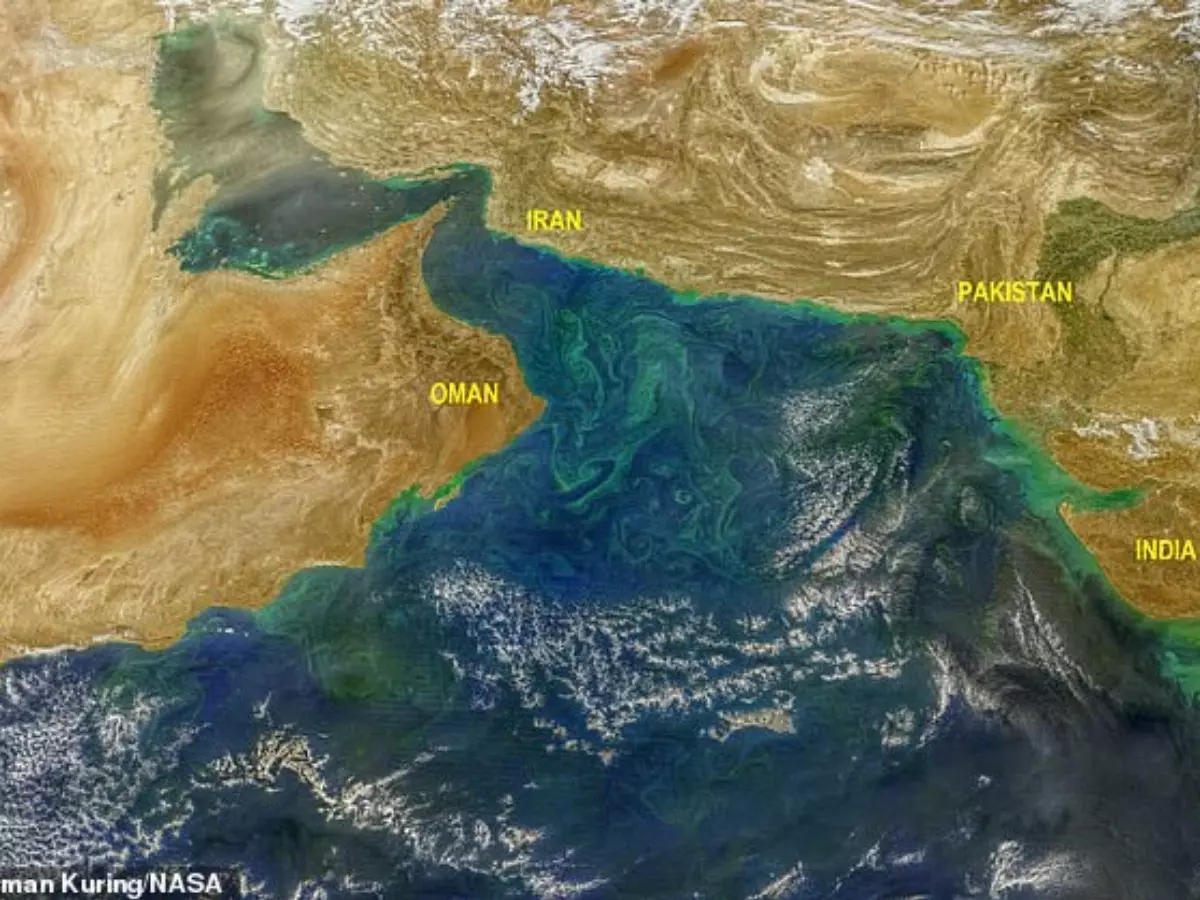Himalayas' Melting Snow Caps Causing Spread Of Toxic Algae In Ocean That Is Visible From Space!
The persistent loss of snow cover in the Himalayan-Tibetan Plateau region is fueling a destructive algal bloom in the Arabian Sea. Millimeter-size planktonic organisms called Noctiluca scintillans, which were rarely seen in this region two decades ago, are now thriving in the Arabian Sea.

The loss of snow cover in the Himalayan-Tibetan Plateau region is fueling a destructive algal bloom in the Arabian Sea.
US research based on NASA images found blooms of the marine species Noctiluca Scintillans, known as 'sea sparkle', lining coastlines around the Arabian Sea.
 Source/phys.org
Source/phys.org
The unusual organism - a millimeter-size planktonic organism with an extraordinary capacity to survive, thrive and force out diatoms, the photosynthesizing plankton that have traditionally supported the Arabian Sea food web.
New research published this week in Nature's Scientific Reports describes how the continued loss of snow over the Himalayan-Tibetan Plateau region is fueling the expansion of this destructive algal bloom.
Led by Joaquim I. Goes, the Earth Institute team used field data, lab experiments, and decades of NASA satellite imagery to link Noctiluca in the Arabian Sea to melting glaciers and a weakened winter monsoon.
¡°This is probably one of the most dramatic changes that we have seen that's related to climate change,¡± said Goes. ¡°We are seeing Noctiluca in Southeast Asia, off the coasts of Thailand and Vietnam, and as far south as the Seychelles, and everywhere it blooms it is becoming a problem. It also harms water quality and causes a lot of fish mortality.¡±
The sheer size of Noctiluca blooms, which first appeared in the late 1990s, threaten the Arabian Sea's already vulnerable food chain.
'It also harms water quality and causes a lot of fish mortality,' Goes said.
Using lab experiments, field data and decades of NASA satellite imagery, the researchers were able to link the rise of Noctiluca in the Arabian Sea with melting glaciers and a weakened winter monsoon, states Columbia.edu.
 Source/phys.org
Source/phys.org
Noctiluca blooms not only compete with phytoplankton for replenished nutrients, but also feed on the phytoplankton themselves.
According to the researchers, the study provides compelling new evidence of the cascading impacts of global warming on the Indian monsoons and the economic stability of large populations along the Arabian Sea.
 Source/nature.com
Source/nature.com
¡°Most studies related to climate change and ocean biology are focused on the polar and temperate waters, and changes in the tropics are going largely unnoticed,¡± said Goes. The study highlights how tropical oceans are being disproportionately impacted, losing their biodiversity, and changing faster than conventional model prediction
This may portend dire consequences over the long term for countries in the region already gripped by socioeconomic problems from war, poverty and loss of livelihoods, said Goes. The study highlights how tropical oceans are being disproportionately impacted, losing their biodiversity, and changing faster than conventional model predictions, reports phys.org
However, only jellyfish and salps seem to find Noctiluca palatable. In Oman, desalination plants, oil refineries and natural gas plants are forced to scale down operations because they are choked by Noctiluca blooms and the jellyfish that swarm to feed on them., reports pyhs.org.
